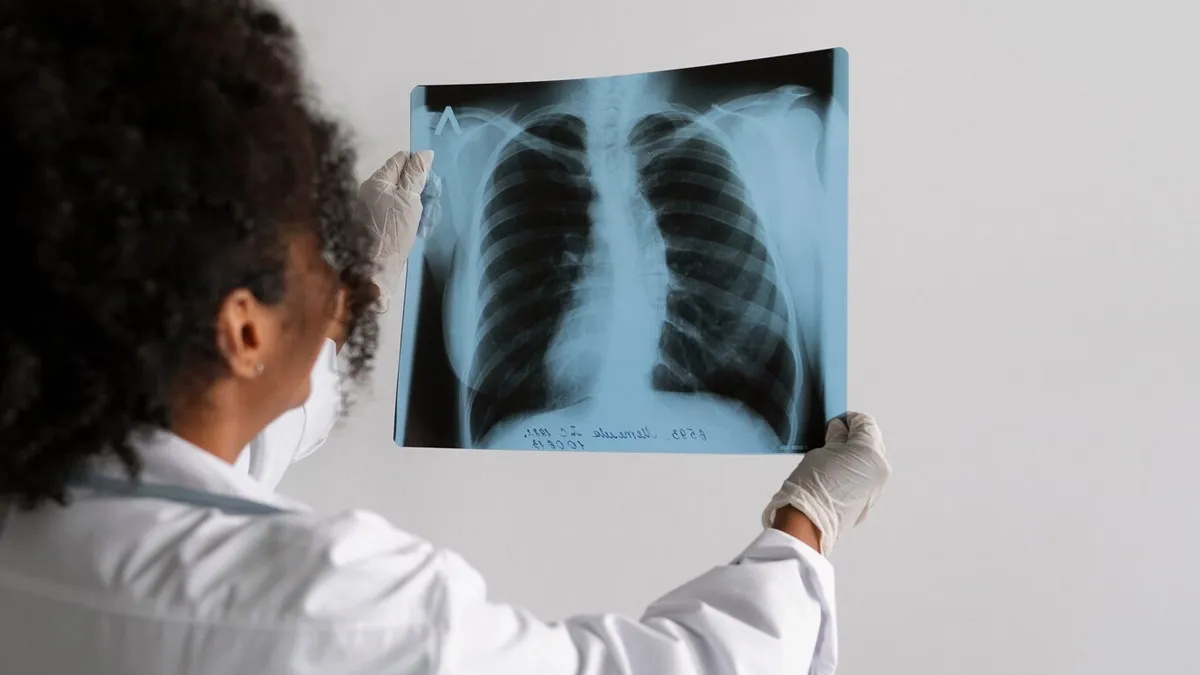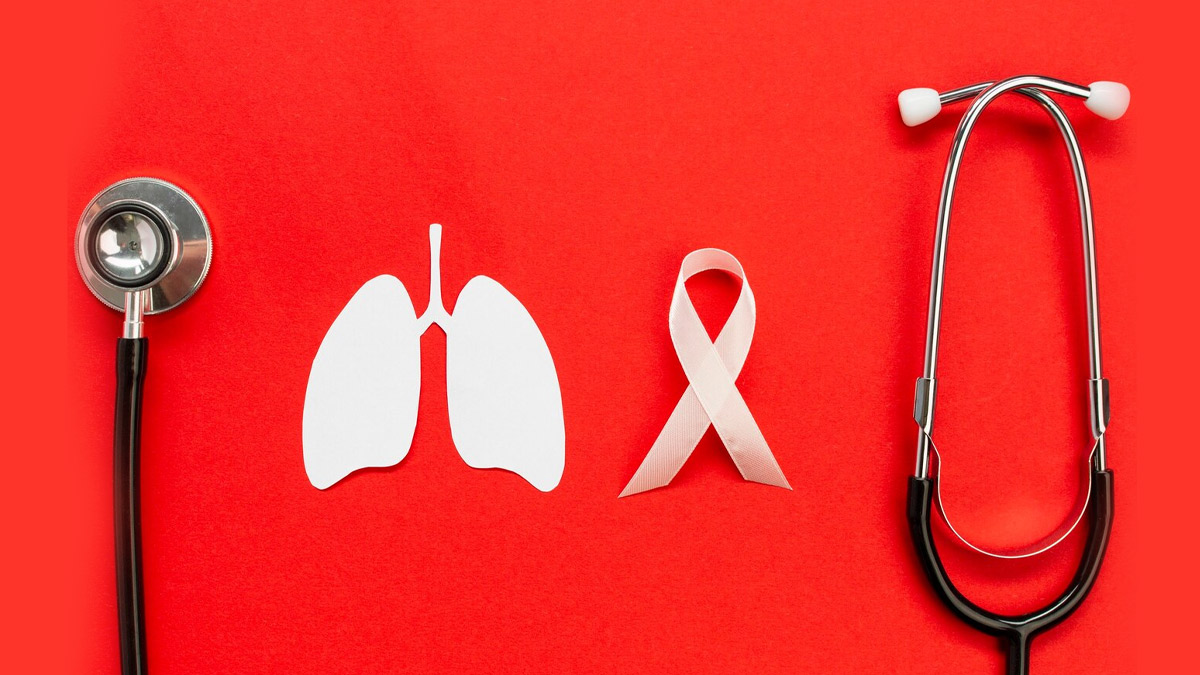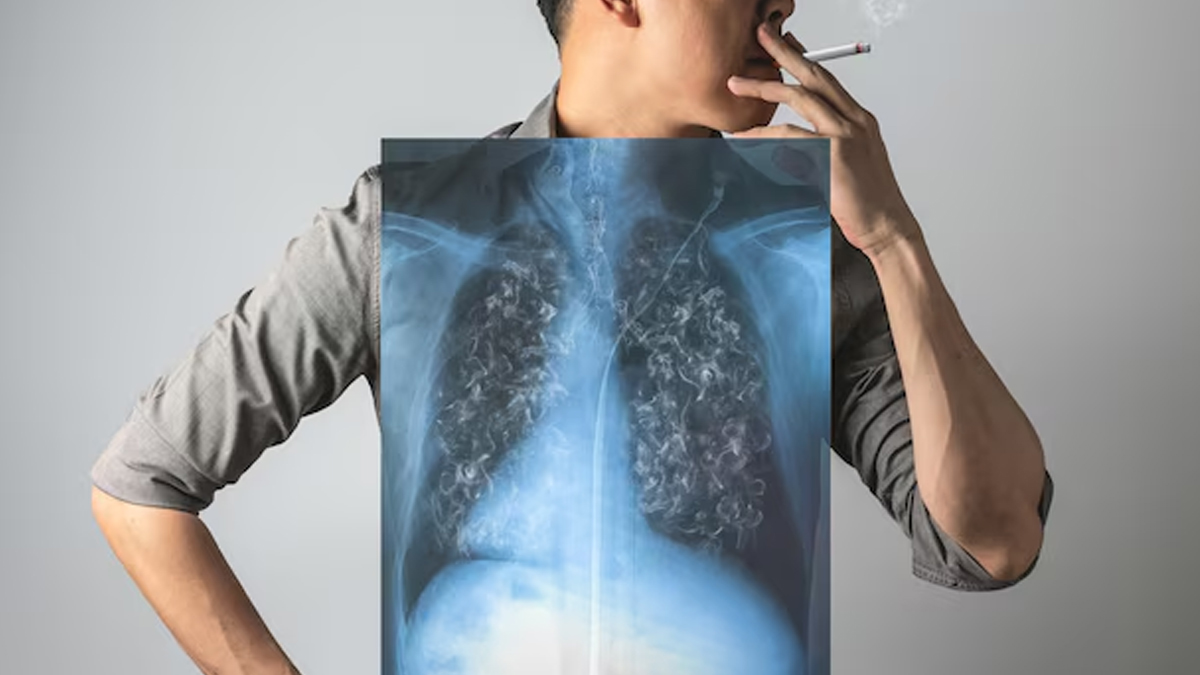
Smoking remains a leading cause of lung cancer, accounting for 85% of all cases, according to the World Health Organization (WHO). But that is not to say that non-smokers are safe. In fact, 10–25% of all lung cancer cases occur in people who have never smoked, says Dr Gagan Saini, Vice Chairman and Head of Oncology, Yashoda Medicity, Kaushambi. In certain parts of the world, particularly in Asia, the incidence of lung cancer among non-smokers is notably higher, especially among women, the doctor further highlights.
Table of Content:-
Let’s understand why and how lung cancer isn’t just a smoker’s disease but can also affect people who do not smoke at all.
Also Read: How To Interpret Lung Nodules On A Chest X-Ray: Can They Be Cancerous?
Why Lung Cancer Is Not Just A Smoker's Disease

A 2020 study published in the Missouri Medicine journal revealed that 15-20% of men with lung cancer are non-smokers, whereas over 50% of women with lung cancer are non-smokers. This pattern varies significantly by region. For example, in Asia, non-smoking women account for approximately 60–80% of lung cancer cases.
In contrast, each year, about 10-20% of lung cancers in the United States happen in people who never smoked or smoked fewer than 100 cigarettes in their lifetime, according to theUS Centers for Disease Control and Prevention (CDC).
Dr Saini explains that for people who don’t smoke, lung cancer often develops because of long-term exposure to harmful substances in the environment. This exposure sets off a chain reaction in the lungs:
Chronic Exposure → Lung Injury → Inflammation → DNA Damage → Mutations → Clonal Expansion → Cancer
What this means is that these harmful substances damage the lungs over time, leading to inflammation and injury. This triggers changes at the genetic level, causing cells to grow uncontrollably, which can eventually turn into cancer.
How Lung Cancer Develops In Non-Smokers

Here’s a breakdown of how harmful substances affect people’s lungs and how lung cancer eventually develops in non-smokers:
DNA damage and mutation
Things like radon gas (which can sneak into homes), radiation, certain air pollutants, and arsenic can directly harm the DNA inside lung cells. This damage can cause important genes that regulate cell growth to malfunction, setting the stage for cancer.
Oxidative stress
Substances like silica dust, asbestos fibres, and air pollution generate harmful molecules called reactive oxygen species (ROS). These molecules attack and damage cells, pushing the lungs toward cancerous changes.
Chronic inflammation
When the lungs are constantly irritated by conditions such as COPD, tuberculosis, or fibrosis, they remain inflamed for long periods. This ongoing inflammation damages tissue and increases the risk of errors in DNA, which can lead to cancer.
Also Read: Why Are Lungs A Common Target For Cancer Spread? An Oncologist Explains
Epigenetic changes
Some heavy metals — arsenic, nickel, and chromium — don’t change the DNA code itself but affect how genes are turned on or off. These changes can disrupt the cell’s normal behaviour and encourage cancer development.
Cell proliferation and repair
When lung tissue is repeatedly injured by toxins, the cells keep dividing to repair the damage. Every time a cell divides, there’s a chance for mistakes that can cause cancer.
Inhibition of apoptosis
Normally, damaged cells are programmed to self-destruct to prevent harm. But certain carcinogens like radiation and arsenic can block this process, allowing damaged cells to survive and multiply uncontrollably.
Common Risk Factors For Lung Cancer In Non-Smoking Individuals

According to the CDC, researchers estimate that secondhand smoke is responsible for approximately 7,300 lung cancer cases, while radon exposure accounts for about 2,900 cases.
Other risk factors include:
- Air pollution (including particulate matter and toxic gases)
- Occupational exposure to carcinogens (asbestos, silica, arsenic, nickel, chromium)
- Chronic Lung Diseases (COPD, tuberculosis, pulmonary fibrosis)
- Genetic predisposition and family history
- Exposure to radiation
- Indoor pollutants (biomass fuel smoke, cooking fumes)
- Hormonal factors (higher incidence in women possibly linked to hormones)
- Viral infections (certain viruses like HPV in some cases)
Conclusion
Lung cancer in non-smokers is a significant public health issue, often linked to environmental exposures and underlying lung conditions. Understanding these alternative pathways is crucial for early detection, prevention, and targeted treatment, especially in populations not typically associated with traditional smoking-related risks.
Also watch this video
Read Next
Childhood Cancer Treatment: Expert Explains Advances In Treating DIPG, A Deadly Brain Cancer
How we keep this article up to date:
We work with experts and keep a close eye on the latest in health and wellness. Whenever there is a new research or helpful information, we update our articles with accurate and useful advice.
Current Version